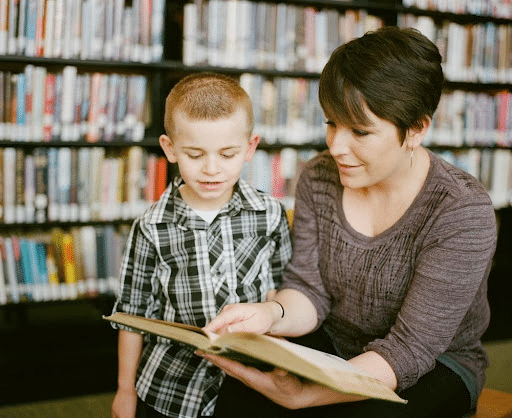Ways to Help Struggling Readers
Tired of Googling, “How can I help my struggling reader at home?” Don’t worry, we have got you covered!
Over 10 million children around the world have difficulties learning to read. The number is huge, but that doesn’t mean that struggling readers can’t overcome their difficulties. Around 90% to 95% of children struggling with reading can overcome their difficulties if they receive the right guidance early.
The first thing you need to know is that helping your child overcome reading difficulties is possible. However, expecting it to happen overnight is the problem.
Before discussing how to help a struggling reader, let’s discuss the common reading difficulties children face.

Common Reading Difficulties Children Face
The learning difficulties that impact fluency in reading include dysgraphia, dyscalculia, and various more. However, the most common one is dyslexia. According to Dr Sally Shaywitz, co-director of the Yale Center for Dyslexia and Creativity, 80% to 90% of children with learning difficulties have Dyslexia.
Kids with dyslexia struggle with decoding the letters in the text and turn them into spoken language.
By not being able to decode words, they are not able to understand what the text means. A great way of helping children with Dyslexia become readers is to introduce them to decodable books.
Decodable books are texts that are controlled for specific phonics. The purpose of decodable books is to practice phonic knowledge and skills they have learned with a control text.
From strengthening orthographic memory to building confidence and reinforcing children’s knowledge of phonics, decodable books offer various benefits and allow children with reading difficulties to take a big step towards independent reading.
Pre-Literacy Skills Parents Should Encourage
Decoding
Decoding is the ability to recognize letters and words and reading them aloud. A few effective strategies to teaching children decode words are building a foundation for phonological awareness, teaching syllable types, and attaching images to sight words.
Vocabulary
A wide vocabulary is fundamentally important for children because it improves all areas of communication (listening, speaking, reading). By helping to improve your child’s vocabulary, you will be ensuring that they understand what they are reading.
There are a lot of fun ways of improving your child’s vocabulary, a few of them are:
- Reading books to them
- Encouraging storytelling
- Having two-way conversations with your child
How to Help a Struggling Reader – Tips and Suggestions

Try Building Up Their Foundation Skills
Pre-reading skills influence student motivation and help children decode words independently. The five pre-reading skills that children have to master before learning to read are:
- Motivation to read
- Listening comprehension
- Letter knowledge
- Print awareness
- Phonological awareness
Notice Your Child’s Strength
Every child has different strengths and abilities. Some draw beautifully, while others are great at putting puzzles together. Make sure to focus on those strengths and tell them that you see them excelling at many things. They shouldn’t feel like they are of no good because they have difficulty learning how to read. You have to make sure that your child understands that people have different strengths and weaknesses. To do so, share your own difficulties with them.
Build Their Confidence
If you want your child to overcome reading difficulties, make sure you appreciate them by pointing out the things they did well. Trying to praise them more than criticizing encourages them to do better. Many people don’t realize that struggling children understand they are having difficulties, especially the older ones. Rather them reminding them of their failures, why not celebrate every success with a high five?
Engage in Multisensory Activities
If you want to help your first-grade struggling reader, make sure you follow multisensory reading strategies. Multisensory activities are a great way of teaching children how to read. It’s a way of teaching that involves more than one sense at a time.
A few multisensory activities for kindergarten students are:
- Drawing alphabets and numbers using tactile materials
- Using blending boards for segmenting sounds
Final Words
Millions of children around the world deal with reading difficulties. The key to helping struggling readers is to take baby steps and appreciate every little success. It’s important to let your little ones know that they are special and possess different strengths and weaknesses like everyone else. Phonics reading programs can also help build a foundation to help a child learn to read. A few more ways of helping struggling readers at home are to offer developmentally appropriate reading through audiobooks, having them practice reciprocal teaching, and encouraging them to read a lot. Audiobooks are a great way of helping children with Dyslexia become readers as well.
Start Teaching Reading for Free Now!
Access Level 1’s four interactive stories and the accompanying supplemental resources to teach elementary students how to read. No credit card is needed. Join the 42,635 teachers and students using our reading program.
